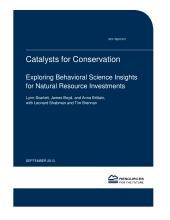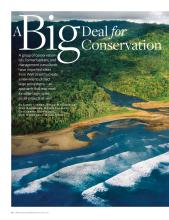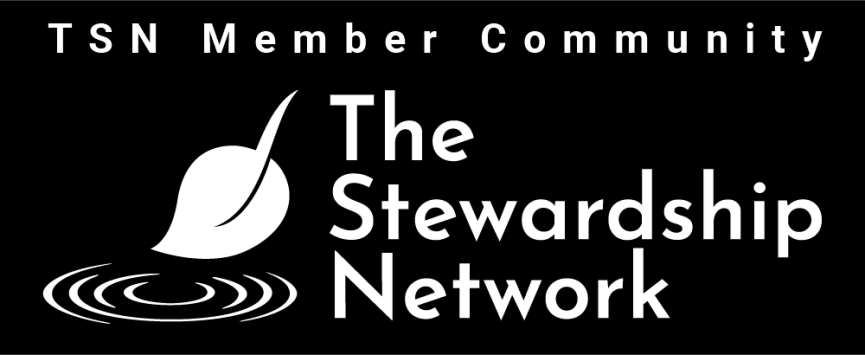Learn more about the state and national policy initiatives and funding programs that shape the work we do.
Resources for the Future, January 2013
Applies behavioral science to improve environmental decision-making and resource management across sectors.
- Details
-
Scientific complexities and uncertainties, interconnections, and the need to coordinate across jurisdictions and scales challenge our ability to address environmental issues. These challenges and their solutions are linked to the attitudes, choices, and actions of individuals, families, communities, businesses, lawmakers, and nations. This report summarizes insights from multiple social and behavioral science research disciplines to shed light on environmental attitudes and corresponding behaviors. We define environmental behavior as the decisions and choices that (a) affect the efficient and effective use of natural resources; (b) reduce waste (energy, water, material, and so on); (c) reduce pollution; and (d) facilitate the management of terrestrial and marine ecosystems to restore, enhance, or preserve these ecosystems, their functions, and interconnected biodiversity.
Stanford Social Innovation Review, 2012
Explores how collective impact strategies can transform conservation funding and collaboration, highlighting innovative partnerships and shared goals for lasting environmental change.
- Details
-
A group of conservationists, former bankers, and management consultants have imported ideas from Wall Street to create a new way to protect large ecosystems—an approach that may work for other large-scale social projects as well.
California Natural Resources Agency, 2002
Identifies regulatory, funding, and liability barriers to restoration and recommends actions to remove disincentives and support landowners.
- Details
-
Secretary Nichols asked the Task Force to examine four of the most common barriers— the regulatory review process, public funding bottlenecks, personal liability issues, and endangered species/private property issues. The Task Force discussed these barriers from both the landowners’ and the regulators’ points of view, reviewed existing efforts to resolve them, and brainstormed other possible solutions to create incentives and motivate people to do this important conservation work, or perhaps more importantly, to remove the disincentives and barriers for those who already have the desire. The Task Force recommends ten different actions that could reduce these barriers and encourage restoration activities.





